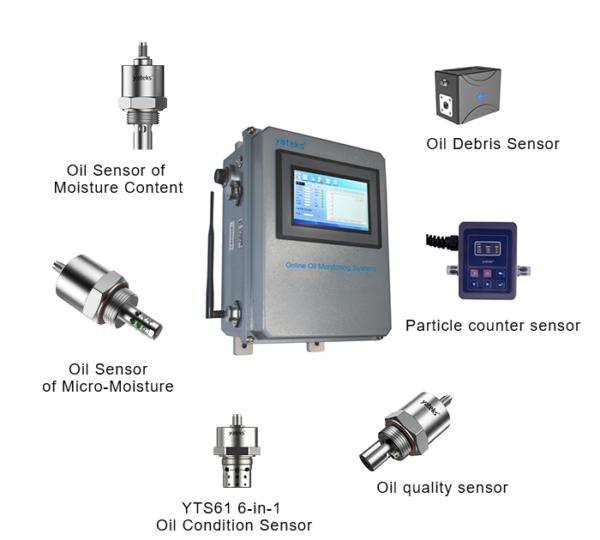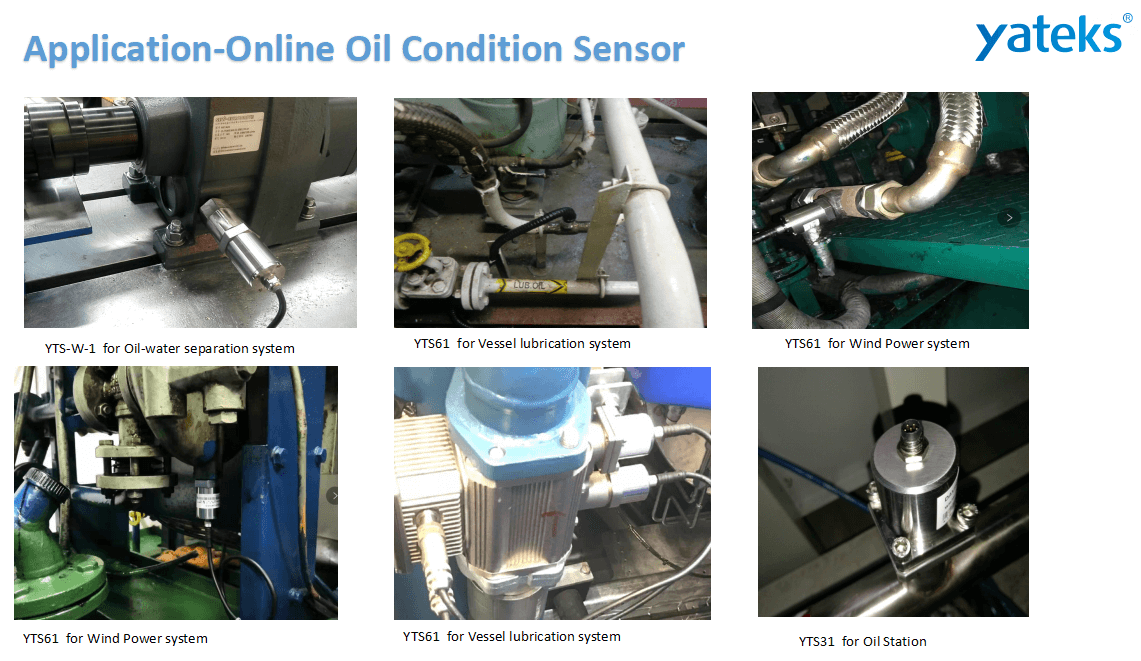In the realm of contemporary machinery and vehicles, oil—such as engine oil, transmission fluid, and hydraulic oil—plays a crucial role. As technology progresses, traditional manual oil condition assessments are progressively being supplanted by advanced oil condition sensors. These sophisticated devices furnish users with precise information regarding oil health through real-time monitoring of quality, contamination levels, and performance variations, thereby significantly enhancing equipment reliability and maintenance efficiency.
This article aims to explore the definition, operational principles, functionalities, and diverse applications of oil condition sensors, thereby providing users with a comprehensive understanding of this pivotal technology.

-
What is an Oil Condition Sensor?
An Oil Condition Sensor (OCS) is an intelligent apparatus designed for real-time monitoring of oil conditions. It directly measures critical parameters such as viscosity, temperature, moisture content, and particulate contamination through embedded sensors, transmitting this data to the control systems of vehicles or machinery for user reference.
Main Functions of an Oil Condition Sensor:
Monitor Oil Health: Assess whether the oil has deteriorated or become contaminated.
Predict Oil Lifespan: Assist users in determining the optimal time for oil replacement.
Provide Early Warnings: Identify potential equipment wear and failures, preventing unexpected downtime.
In essence, the oil condition sensor acts as a “healthcare provider” for oil, delivering comprehensive, real-time monitoring for vehicles or machinery.

-
Why Do We Need an Oil Condition Sensor?
Traditional oil testing methods necessitate manual sampling and laboratory analysis, which can be time-consuming and fail to reflect real-time oil conditions. Oil condition sensors effectively address the following challenges:
-
Enhanced Detection Efficiency:
These sensors offer immediate monitoring data, eliminating the delay associated with laboratory test results.
-
Prevent Unnecessary Maintenance:
By accurately assessing oil conditions, users can avoid premature oil changes that incur extra costs and mitigate the risk of equipment damage from delayed changes.
-
Ensure Equipment Safety:
Timely detection of oil anomalies—such as elevated moisture levels or excessive contaminants—can avert failures or downtime caused by oil-related issues.
-
Extend Equipment Longevity:
Accurate monitoring of oil conditions reduces equipment wear, thereby prolonging service life.
-
Working Principle of Oil Condition Sensors
The core functionality of oil condition sensors lies in their ability to detect multiple parameters within oil and analyze oil health through sophisticated algorithms. The primary operational principles include:
- Data Acquisition:
The sensor is equipped with multiple probes that monitor essential parameters:
Viscosity: Evaluates oil fluidity and lubrication capacity.
Temperature: Measures operating temperature to prevent performance degradation.
Moisture Content: Utilizes conductivity or infrared technology to detect water presence, preventing corrosion.
Particle Contaminants: Assesses the quantity and size of metal particles and external contaminants to gauge equipment wear.
Dielectric Constant: Indicates oil oxidation or depletion of additives.
- Data Processing:
The raw data collected by sensors is relayed to the vehicle or equipment’s main control unit (ECU), which processes this information through algorithms, factoring in operational parameters like working hours and load, to generate a health assessment of the oil. - User Notifications:
When oil conditions deviate from the norm, the sensor alerts the user via dashboards, monitoring systems, or mobile applications. Example alerts may include:”Oil is critically contaminated; please inspect the equipment.” “Moisture content exceeds acceptable levels; please replace the oil.”
-
Common Types of Oil Condition Sensors
Oil condition sensors can be categorized based on application scenarios and detection parameters:
- Oil Viscosity Sensors:
Primarily used for monitoring viscosity changes in lubricating and hydraulic oils. - Oil Temperature Sensors:
Continuously monitor oil temperature to prevent performance degradation due to overheating. - Oil Moisture Sensors:
Detect moisture content in oil via infrared or conductivity methods, mitigating corrosion risks. - Oil Particle Sensors:
Assess the number and size of particulate contaminants to evaluate equipment wear. - Oil Multi-Function Sensors:
Combine multiple detection capabilities, such as viscosity, temperature, and moisture, suitable for comprehensive monitoring of equipment or vehicles.

Oil condition sensors are extensively utilized across various domains, including:
-
Automotive Sector:
Engine Oil Monitoring: Determines the necessity for oil replacement to prevent engine overheating or wear.
Transmission Oil Monitoring: Ensures smooth shifting and prolongs transmission lifespan.
2.Industrial Equipment:
Hydraulic Systems: Monitors hydraulic oil viscosity and moisture to avert equipment failures.
Gearboxes: Assesses lubricating oil health to minimize gear wear.

- Aerospace:
Aerospace Engines: Monitors lubricating oil status for flight safety.
Helicopter Transmission Systems: Evaluates wear of key components through particle monitoring.
- Construction Machinery:
Equipment like excavators and bulldozers operating in harsh environments necessitates real-time oil status monitoring to extend service life. - How to Choose a Suitable Oil Condition Sensor
When selecting an oil condition sensor, users should consider:
- Application Scenario:
Choose a sensor based on equipment type and operational context—industrial machinery should prioritize multifunctional sensors, while vehicles might opt for specialized engine or transmission oil sensors. - Detection Parameters:
Identify key indicators for monitoring (e.g., viscosity, temperature, particle content) and select the corresponding sensor type. - Accuracy and Response Time:
High-precision, rapid-response sensors yield more dependable monitoring outcomes, crucial for high-load machinery. - Compatibility:
Ensure the sensor’s compatibility with the equipment’s control system to prevent data transmission or operational issues. - Maintenance and Longevity:
Opt for durable, low-maintenance sensors to minimize long-term operational costs. - Future Development Trends of Oil Condition Sensors
With advancements in Internet of Things (IoT) and artificial intelligence (AI), oil condition sensors are poised for smarter and more accurate evolution:
-
Intelligent Monitoring:
Future sensors may incorporate self-learning and diagnostic capabilities, automatically predicting maintenance needs based on oil data.
-
Wireless Transmission Technology:
Utilizing wireless technologies (e.g., Bluetooth, Wi-Fi) for remote data transmission allows users to access real-time oil status.
-
Nanosensing Technology:
Sensors leveraging nanotechnology will offer enhanced sensitivity and accuracy, detecting trace contaminants and performance shifts.
-
Cloud Platform Integration:
Integration with cloud platforms will facilitate data storage, analysis, and sharing, empowering users to optimize equipment management.
Article Summary:
Oil condition sensors are indispensable technologies for modern vehicles and industrial equipment, providing users with accurate health assessments and early warnings through real-time oil monitoring. These sensors ensure equipment safety, reduce maintenance costs, and extend equipment lifespans. Users should select the appropriate sensor type based on their unique requirements and effectively leverage the monitoring data in conjunction with equipment characteristics. As technology advances, oil condition sensors are set to introduce innovations across various industries, enhancing equipment operation stability and safety.
For inquiries regarding oil condition sensors, please contact us. Yateks specializes in oil condition analysis and offers comprehensive solutions.

